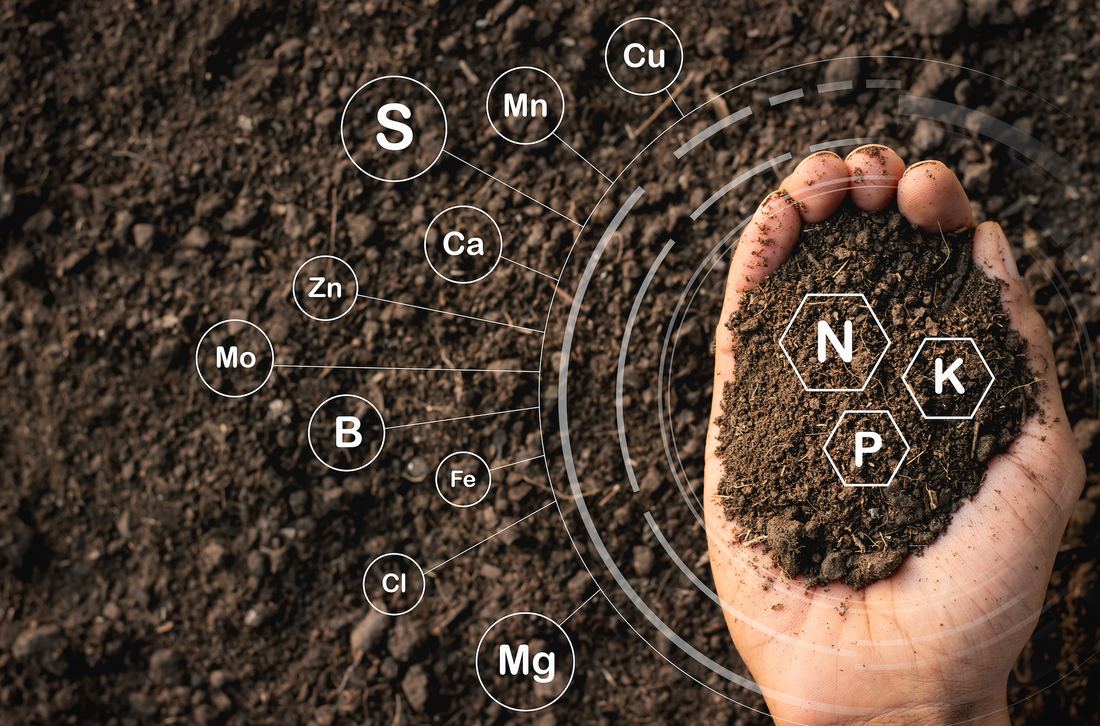Monitoring the cation exchange capacity of your soil and adjusting your lawn care to fit its needs can be one of the most important ways to nurture your lawn or garden.
What Is Cation Exchange Capacity?
Cation exchange capacity measures the ability of a soil to hold onto exchangeable cations. All soil is made of clay, silt, organic matter, and sand. The parts of soil made up of clay and organic matter have negatively charged sites, which attract positively charged ions, known as cations, and absorb them to pass onto plants. Ions are essential plant nutrients, such as calcium, iron, magnesium, manganese, boron, copper, and zinc, to name a few. When hydrogen ions are in the soil it binds to the negatively charged soil colloid and another positively charged cation is released for the plant root. Essentially, these sites attract many of the nutrients your lawn or plants need to grow. If CEC is low, the cations flow through the soil, and your lawn or plants will not have the chance to absorb them. CEC is the measurement of the ability to attract and exchange those nutrients, and soils with high CECs tend to have greater water holding capacities due to their clay and organic matter content.
What Are Cations?
Cations are positively charged ions, which means they have more protons than electrons. The ability of a soil to react with them and, in turn, transfer to plants, is the cation exchange capacity. Cations commonly found in soil are iron, calcium, potassium, hydrogen, magnesium, and more.

How Is Cation Exchange Capacity Measured?
CEC is measured as a number from 0 (low) to 50 (high). The higher the number, the larger the number of cations with which the soil can react. The lower the number, the less likely it is that the cations needed to grow your lawn or plants will be retained by the soil. Soil with a cation exchange capacity of 10 or lower is considered as having a poor ability to hold cations. Knowing a general number of your cation exchange capacity can help you make decisions about your lawn care. If you have a large plot of soil, you can get your soil tested to easily find out your CEC and adapt your lawn care methods. If you have a smaller area or do not want to send it off to a lab, simply research the average soil texture of your state or geographic area.
What Factors Affect Cation Exchange Capacity?
Many factors affect the cation exchange capacity of a soil. One of them is the state in which you live, because the makeup of soil, such as sand, clay, silt, etc., can dictate the amount of negatively charged sites. Soil with more silt, clay, and organic matter have higher cation exchange capacities, while soil with more sand has lower CEC. The pH level of your soil can also affect CEC. As the pH is raised, those negatively charged sites (even if there are only a few) increase in capacity, especially in the organic matter of the soil.
Why Does Cation Exchange Capacity Matter?
Being aware of the cation exchange capacity in your soil is important for your plants. The ability of your soil to attract nutrients and then supply those nutrients to your plants depends on the cation exchange capacity.
How Will CEC Affect My Lawn Care Routine?
Since cation exchange capacity measures the ability of a soil to retain nutrients, the CEC of your soil will change the way you determine your lawn care. A soil with low cation exchange capacity needs to be fertilized more frequently, while high CEC soil needs less frequent fertilization.
The more you know about your soil texture and the chemistry of your soil, the easier it is to maintain a healthy, flourishing lawn or garden. Knowing your cation exchange capacity and monitoring the nutrients your soil maintains can be game-changers when it comes to lawn care, and at Simple Lawn Solutions, we have the fertilizer program you need to care for your lawn.









